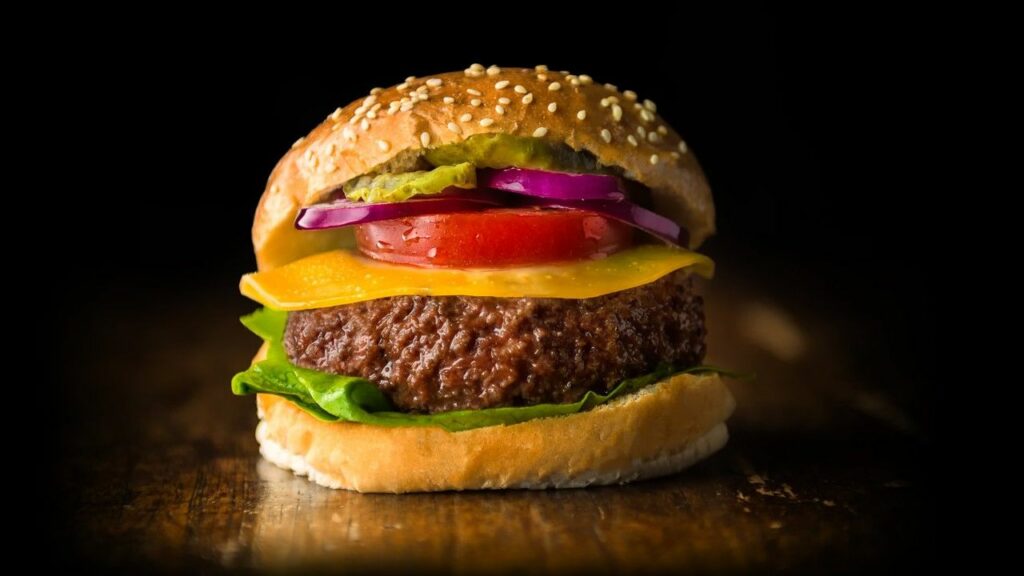This December, Singapore became the first place in the world to approve the consumption of lab-grown meat.. It was a remarkable first step, but in a sense, it seemed also unavoidable. We’ve seen lab-grown meat get cheaper and cheaper, we’ve seen massive investments into it, and we’ve already seen it regarded as a serious industry, before even having a product on the market.
While some will undoubtedly regard it with skepticism — after all, many regard even vaccines with skepticism — many viewed it as a big triumph. Not only is this a way to ensure the production of cruelty-free meat, since you don’t actually have to kill any animals, but lab-grown meat could also come with some added bonuses. Producers tout it as a more eco-friendly alternative, reducing emissions and land use. It also comes without any growth hormones or bacterial contamination, which is often the case for ‘real’ meat. But perhaps just as importantly, or even more so, it’s antibiotic free.
The use of antibiotics in the meat industry is one of the main causes of antibiotic-resistant bacteria, and the meat industry is an important driver of zoonotic diseases — diseases that jump from animals to humans. In fact, human behavior is the main driver of new, zoonotic diseases, and if things continue as they are now, it seems like it’s only a matter of time before the next pandemic comes.

Redefining our relationship with meat
We don’t yet know exactly where and how the novel coronavirus SARS-CoV-2 jumped from an animal species to humans. We may never know. The likely candidates include bats and pangolins, the latter of which are routinely sold as bushmeat.
But before SARS-CoV-2, there was the 2009 swine flu pandemic, the avian flu epidemic, MERS — all of which originated from domesticated animals.
“The question is not ‘if,’ it is ‘when,’ the next pandemic will be,” Delia Randolph, a global leader in the spread of animal diseases, told Deutsche Welle when asked what zoonoses mean for humanity. “Ever since we have been keeping good records, we have seen one new human disease emerging every four months, many from animals […] and this is accelerating.”
While hygiene standards can indeed lower the risk of transmitting diseases through crowded meat factories, several zoonotic diseases have been introduced through factory farming in the past, including avian influenza.
To get a clearer idea of just how diseases can spread in animal industries, we need look no further than the mink debacle,where millions of the animals have been culled in Denmark, as well as in Spain, the Netherlands, and several other countries for fears that they could carry the novel coronavirus and help it mutate.
Excessive consumption of meat has also been linked to the increasing risk of pandemics by an international panel, whose report concluded that “consumption, globalized agricultural expansion and trade” can cause pandemics, including ones similar to the COVID-19 pandemic. The report called for “taxes or levies on meat consumption, livestock production or other forms of high pandemic risk consumption” and recommended less consumption of both wildlife and domestic livestock. The livestock trade, the report noted, also releases pathogens through deforestation — an often overlooked aspect.
“These microbes ‘spill over’ due to contact among wildlife, livestock, and people,” the report writes.

New, resistant pathogens
Outbreaks aren’t necessarily caused by new pathogens. We still have outbreaks of measles, Ebola, influenza, all of which have been known for a long time. For many of these pathogens we already have treatments or even vaccines — for now.
Treatment resistance is quickly becoming a major problem. It’s no longer a future problem: it’s here now, and it’s already claiming lives. Each year in the US alone, 2.8 million people get an antibiotic-resistant infection and globally, it’s estimated that this resistance kills 700,000 people a year.
The prospect of diseases we just can’t treat is horrifying. While bacteria develop antibiotic resistance, viruses, fungi, and other parasites can also develop resistance to their treatments. We’ve gotten so used to antibiotics and vaccines that it almost seems incomprehensible, and yet, resistance can make common pathogens essentially untreatable. Just take the so-called “super gonorrhea” — a common pathogen that is becoming nigh-untreatable in some patients.
“Gonorrhea has quickly developed resistance to all but one class of antibiotics, and half of all infections are resistant to at least one antibiotic. Tests to detect resistance are not available at time of treatment,” a CDC report notes.
Several types of bacteria are already starting to exhibit startling resistance to antibiotics. Methicillin-resistant Staphylococcus aureus (MRSA), which is commonly found in hospitals and other healthcare settings. It’s not just bacteria: viruses, fungi, and other parasites can also develop resistance to treatment.
“Antibiotic resistance leads to higher medical costs, prolonged hospital stays, and increased mortality. The world urgently needs to change the way it prescribes and uses antibiotics. Even if new medicines are developed, without behaviour change, antibiotic resistance will remain a major threat,” the World Health Organization notes, quoting antibiotic resistance as one of the biggest threats to human health.
Meat is a major contributor to antibiotic resistance, recent studies have shown, with one study finding that antibiotic resistance in animals has nearly tripled since 2000.
“Animal production is increasing worldwide and the consequences of intensive use of antibiotics on resistance in animals is amply clear from our analysis,” notes Ramanan Laxminarayan, senior research scholar at Princeton University and author of a 2019 analysis.
Farmers around the world use antibiotics to prevent illness in their animals, but the effectiveness of these antibiotics is dropping at an alarming rate. The threat of this is two-fold: for starters, it means that animals can become more vulnerable to bacterial infections that cannot be kept under control, hampering farmers’ ability to raise and sell animals. But perhaps even more terrifying is the possibility of one such drug-resistant pathogen making the jump to humans.
This is what some of the proponents of lab-grown meat are saying: one key advantage of it is that it will substantially reduce the number of antibiotics we use and ingest, which could reduce one of the main drivers of antibiotic resistance. But while this is an argument for lab-grown meat, it will be a while before we get there.
Lab-grown meat is promising, but it won’t save us just yet
Back in 2013, Mosa Meat’s current Chief Scientific Officer Mark Post revealed “the world’s first slaughter-free hamburger” at a London press conference. There has been definite progress in the industry, but as of early 2021, cultured meat is still struggling to make its way from the lab and into our plates.
Dozens of start-ups are actively working on it, but at the moment, cultured meat is still significantly more costly than conventional meat. The first lab-grown burger from 2013 cost around $330,000 USD, whereas now, it can cost $9 — a huge decrease in cost, but still not quite on par with the production of conventional meat. Scaling production also remains challenging and we’re still in the
Cultured meat is still in its infancy, that’s for sure. It’s quickly developing, but it’s not quite there just yet. Even when it does roll out, it will start in developed, richer countries, which usually also have higher hygiene standards in farms — whereas studies have shown that antibiotic-resistance and livestock zoonotic diseases are most prevalent in developing countries, so it will be a while before cultured meat makes a strong impact.
Sure, once lab-grown meat does become a viable scalable alternative, it’s bound to become more and more common as time passes. It’s more ethically sound, it uses no genetic engineering, it reduces our use of antibiotics, and reduces greenhouse gas emissions and land use by over 90%. But whether or not this will keep up with the world’s ever-growing demand for meat is a different question.
Sooner or later, the next pandemic will come, and there’s a good chance it will be caused by our interactions with animals. While lab-grown meat looks like an important player in the future, for the time being, perhaps we’d best be eating a bit more vegetables.


